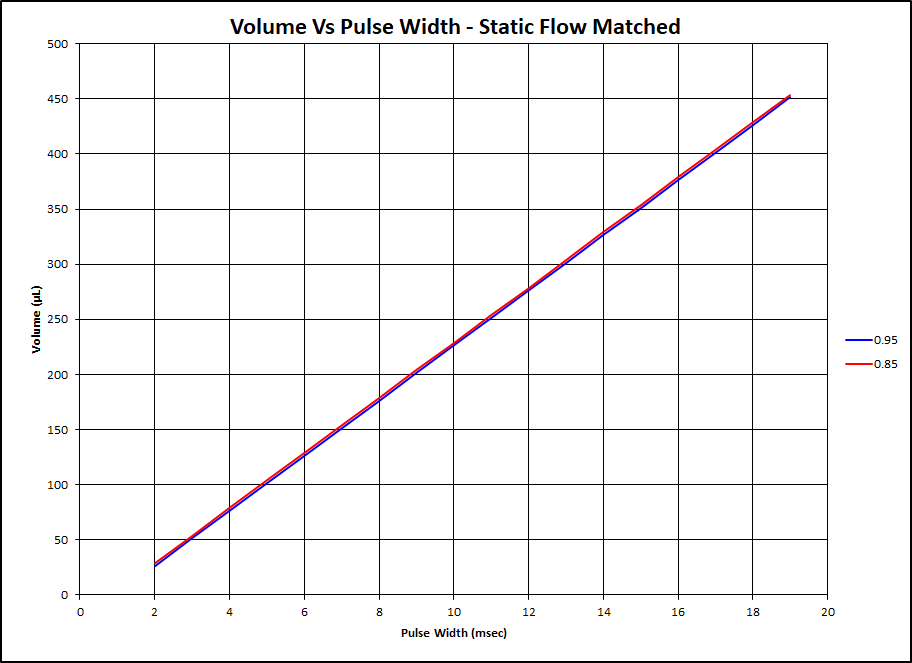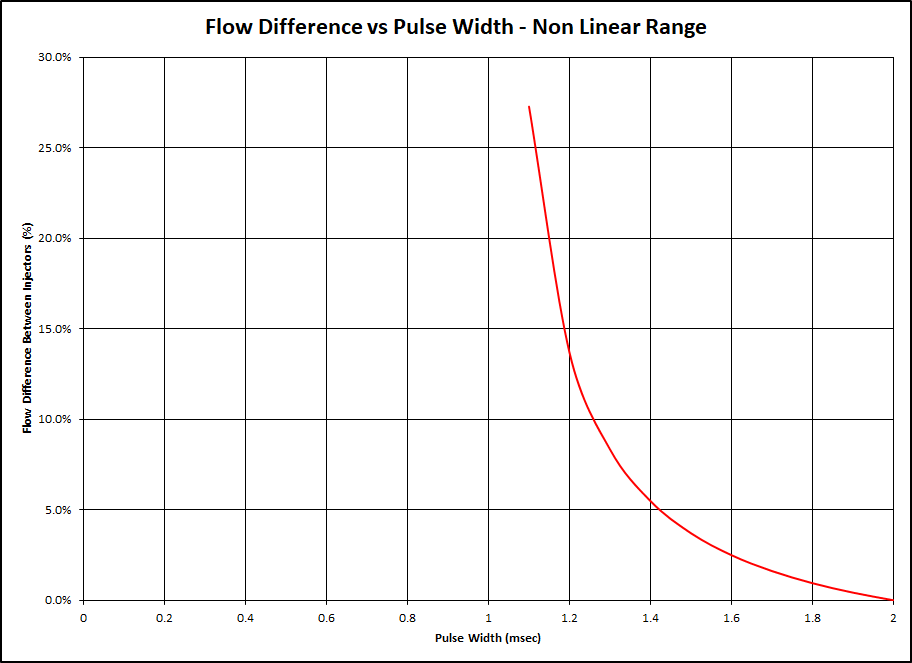Can't Find What You're Looking For?
If you're looking for something in particular, we can help. Drop us a line using the button below.
Submit A RequestWhy Buy From Us?
- Australian Owned
- 100% Fitment Guarantee
- Genuine Quality Brands

Shop now. Pay Later. Interest Free.
Make 4 interest-free payments of $586.24 fortnightly and receive your order now. More info

Enjoy Now, Pay Later
Description
The ID2600-XDS is the most recent offering from the partnership of Injector Dynamics and Bosch Motorsport. The ID2600-XDS was developed specifically for use with liquid fuels, featuring corrosion resistant internals, and long term compatibility with ethanol and methanol. The ID2600-XDS has the highest flow rate of any injector offered by Bosch, and flows 50% more than the ID1700x.
The ID2600-XDS benefits from Dual Slope Matching, a method of matching the flow rate in both the linear, and nonlinear operating range, providing better cylinder to cylinder consistency at low pulse widths.
What is Dual Slope Matching?
Dual Slope Matching is a method of matching injectors that provides the best possible cylinder to cylinder fueling across the entire operating range.
Traditionally, injectors were matched based on static flow rate alone, which resulted in large deviations at low pulse widths.
Injector Dynamics introduced Slope Intercept Matching over a decade ago, which provided even cylinder to cylinder fueling across the linear operating range of the injector.
With the progression of turbo technology, and increased use of alcohol fuels, greater demands are placed on fuel injectors, and they are often required to deliver fuel well outside of their linear operating range.
The concept of Dual Slope Matching extends the injector matching into the lower non linear operating range. Dual Slope Matching was conceived by Aaron Looft of Injector Dynamics, who was inspired by the dual slope injector characterization model used by Ford.
How Does Dual Slope Matching Work?
LetÕs first consider static flow matching which was the industry standard prior to Injector Dynamics.
The graph below shows the dynamic response of two hypothetical 1500 cc/min injectors within their linear operating range. One with an offset (Dead time, latency, etc.) of 0.95 milliseconds, and one with an offset of 0.85 milliseconds.

The slope of both lines is the same, as they have the same flow rate, but the difference in offset results in the injector with the higher offset delivering 2.5 uL less fuel per injection event. At a pulse width of 19msec, which equals 90% duty cycle at 6,000 rpm, 2.5ul amounts to a mere 0.6% difference in flow between the two injectors, but at 2msec, that same 2.5ul difference amounts to a 9.5% difference!

Slope Intercept matching as introduced by Injector Dynamics in 2007 solved this problem by matching injectors based on flow rate (Slope) and offset (Intercept) providing even cylinder to cylinder fueling across the linear operating range.
Moving on to the non linear operating range, the graph below shows a pair of 1500cc injectors matched using the Injector Dynamics Slope Intercept method. Both injectors have the same flow rate and offset, but in the non linear range, the flow deviates from the straight line shown in the graph above. In this case, the flow rate, or slope of each injector in the non linear range is 1530cc/min and 1470cc/min representing a spread of +/- 2%.
As the graph clearly shows, the difference between the two injectors increases as pulse width decreases.

Shown as percent difference in flow, we see that even though the injectors are matched perfectly in the linear operating range, the difference in slope in the non linear range results in a flow mismatch that is magnified as the pulse-width decreases, becoming substantial at the very lowest pulse widths.

How Well Does This Work in Practice?
Moving from hypothetical injectors to a real world application, the response in the non linear range is considerably less orderly than shown in the graphs above, and is quantified using a technique called Least Squares Linear Regression Ð Which is a fancy way of saying straight line approximation.
By approximating the response in the non linear range, and matching sets accordingly, the best possible cylinder to cylinder fueling is realized across the entire operating range.
Using the ID2600-XDS as an example, the traditional Slope Intercept method of matching results in an average deviation of +/-5.1% in the non linear range, while the new method of Dual Slope Matching has reduced this to +/-1.4%
In a perfect world, this deviation would not exist at all, but for those of us who live (And tune!) in the real world, Dual Slope Matching represents a large step forward, and we are proud to offer it to the market.
Specifications
Nominal Flow Rate – 1065cc/min @ 3.0 Bar (43.5 psi) Using Gasoline at 52 Degrees C (125 Degrees F)
Maximum Differential Fuel Pressure – 10.0 Bar (145.0 psi)
Fuel Compatibility – Compatible With All Known Fuels
Electrical Connector – USCAR
What's Included
-
4 x ID2600X Injectors
-
4 x PnP Wiring Plugs
Compatibility
- 2001-2014 Subaru WRX
- 2002-2020 Subaru STI
- 2008-2012 Subaru Forester XT
The ID2600-XDS is the most recent offering from the partnership of Injector Dynamics and Bosch Motorsport. The ID2600-XDS was developed specifically for use with liquid fuels, featuring corrosion resistant internals, and long term compatibility with ethanol and methanol. The ID2600-XDS has the highest flow rate of any injector offered by Bosch, and flows 50% more than the ID1700x.
The ID2600-XDS benefits from Dual Slope Matching, a method of matching the flow rate in both the linear, and nonlinear operating range, providing better cylinder to cylinder consistency at low pulse widths.
What is Dual Slope Matching?
Dual Slope Matching is a method of matching injectors that provides the best possible cylinder to cylinder fueling across the entire operating range.
Traditionally, injectors were matched based on static flow rate alone, which resulted in large deviations at low pulse widths.
Injector Dynamics introduced Slope Intercept Matching over a decade ago, which provided even cylinder to cylinder fueling across the linear operating range of the injector.
With the progression of turbo technology, and increased use of alcohol fuels, greater demands are placed on fuel injectors, and they are often required to deliver fuel well outside of their linear operating range.
The concept of Dual Slope Matching extends the injector matching into the lower non linear operating range. Dual Slope Matching was conceived by Aaron Looft of Injector Dynamics, who was inspired by the dual slope injector characterization model used by Ford.
How Does Dual Slope Matching Work?
LetÕs first consider static flow matching which was the industry standard prior to Injector Dynamics.
The graph below shows the dynamic response of two hypothetical 1500 cc/min injectors within their linear operating range. One with an offset (Dead time, latency, etc.) of 0.95 milliseconds, and one with an offset of 0.85 milliseconds.

The slope of both lines is the same, as they have the same flow rate, but the difference in offset results in the injector with the higher offset delivering 2.5 uL less fuel per injection event. At a pulse width of 19msec, which equals 90% duty cycle at 6,000 rpm, 2.5ul amounts to a mere 0.6% difference in flow between the two injectors, but at 2msec, that same 2.5ul difference amounts to a 9.5% difference!

Slope Intercept matching as introduced by Injector Dynamics in 2007 solved this problem by matching injectors based on flow rate (Slope) and offset (Intercept) providing even cylinder to cylinder fueling across the linear operating range.
Moving on to the non linear operating range, the graph below shows a pair of 1500cc injectors matched using the Injector Dynamics Slope Intercept method. Both injectors have the same flow rate and offset, but in the non linear range, the flow deviates from the straight line shown in the graph above. In this case, the flow rate, or slope of each injector in the non linear range is 1530cc/min and 1470cc/min representing a spread of +/- 2%.
As the graph clearly shows, the difference between the two injectors increases as pulse width decreases.

Shown as percent difference in flow, we see that even though the injectors are matched perfectly in the linear operating range, the difference in slope in the non linear range results in a flow mismatch that is magnified as the pulse-width decreases, becoming substantial at the very lowest pulse widths.

How Well Does This Work in Practice?
Moving from hypothetical injectors to a real world application, the response in the non linear range is considerably less orderly than shown in the graphs above, and is quantified using a technique called Least Squares Linear Regression Ð Which is a fancy way of saying straight line approximation.
By approximating the response in the non linear range, and matching sets accordingly, the best possible cylinder to cylinder fueling is realized across the entire operating range.
Using the ID2600-XDS as an example, the traditional Slope Intercept method of matching results in an average deviation of +/-5.1% in the non linear range, while the new method of Dual Slope Matching has reduced this to +/-1.4%
In a perfect world, this deviation would not exist at all, but for those of us who live (And tune!) in the real world, Dual Slope Matching represents a large step forward, and we are proud to offer it to the market.
Nominal Flow Rate – 1065cc/min @ 3.0 Bar (43.5 psi) Using Gasoline at 52 Degrees C (125 Degrees F)
Maximum Differential Fuel Pressure – 10.0 Bar (145.0 psi)
Fuel Compatibility – Compatible With All Known Fuels
Electrical Connector – USCAR
-
4 x ID2600X Injectors
-
4 x PnP Wiring Plugs
- 2001-2014 Subaru WRX
- 2002-2020 Subaru STI
- 2008-2012 Subaru Forester XT
Best Sellers

BOSCH 3/4 Length E85 Safe 1100cc @ 4 BAR Injector
$102.60
$114.00

Lower Injector Adaptor & Seal Suits Bosch EV14 (Civic/Integr
$20.69
$22.99




























































































